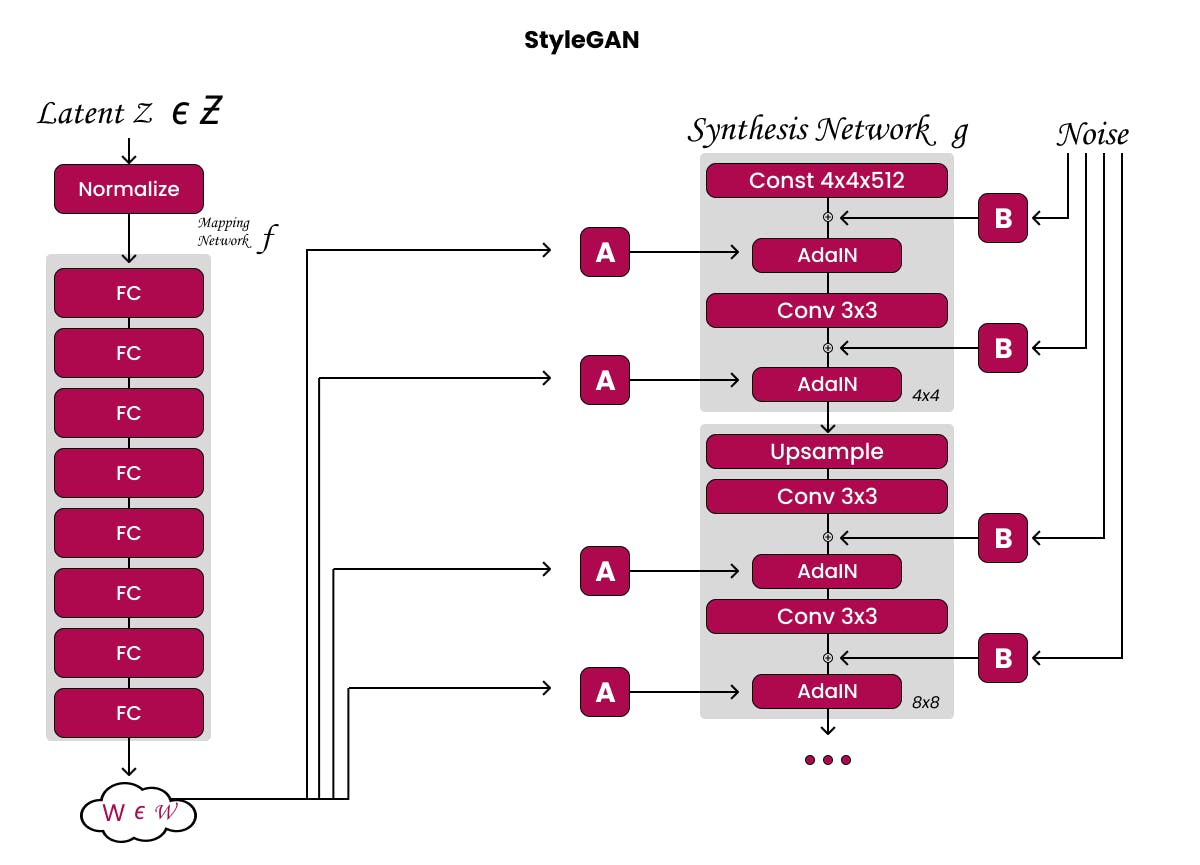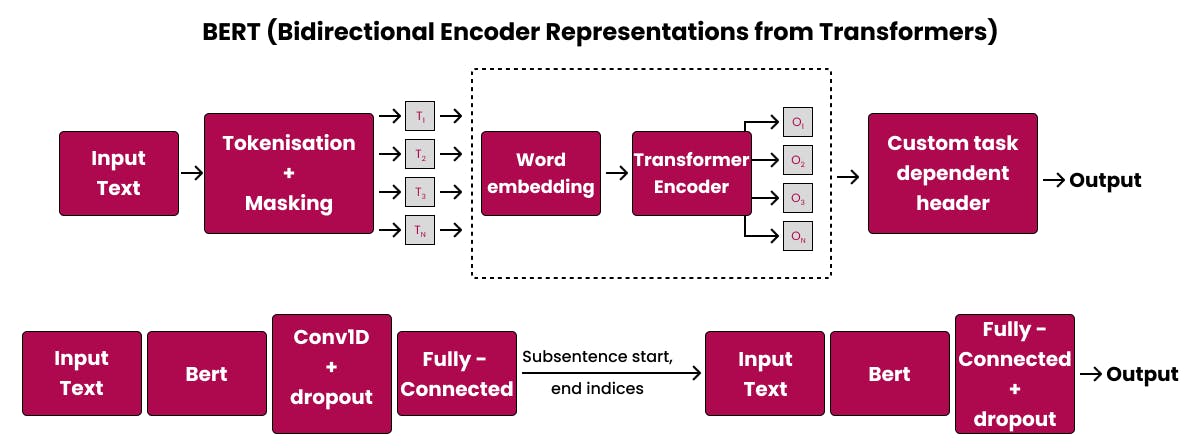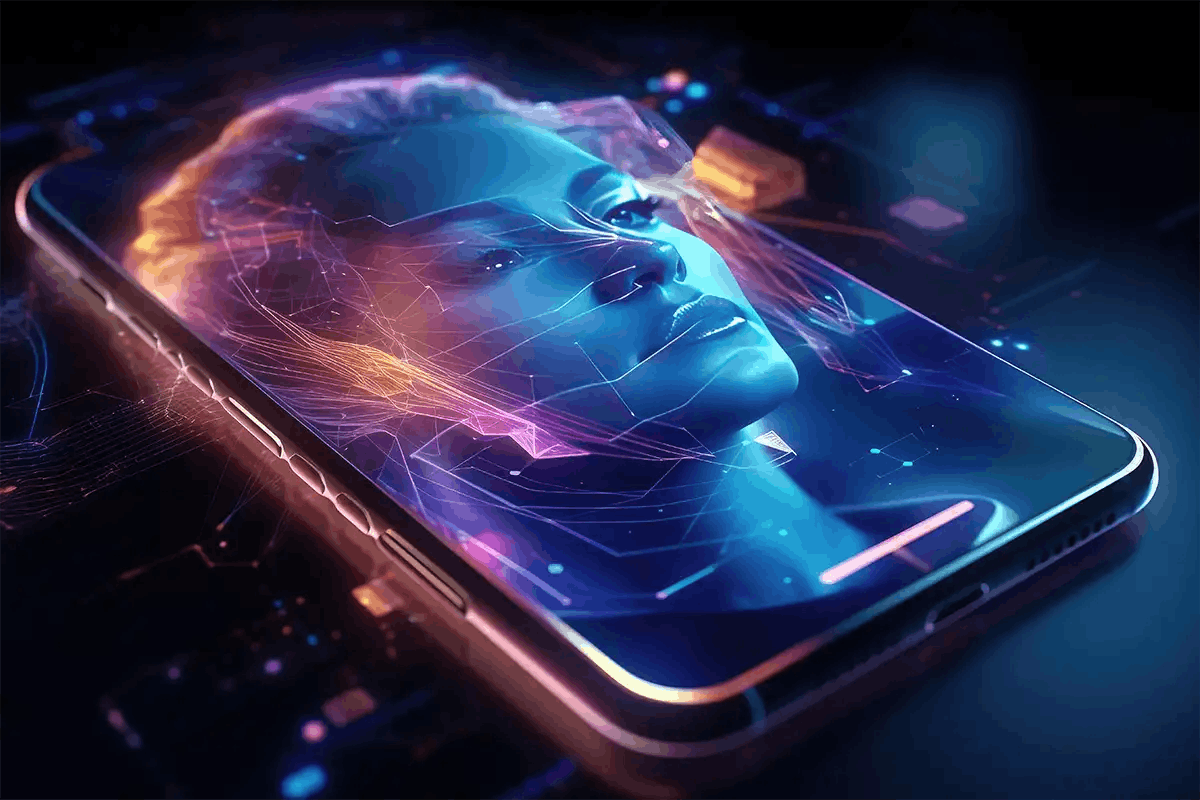
,
In the ever-changing field of Generative AI, pre-trained models are avant-garde tools. These pre-trained models in AI have changed how we design and use machine learning systems. They are the solid foundation that spurs creativity, reflecting vast and different datasets they've undergone detailed training on. This all happens before their use in real-life situations through a method known as fine-tuning.
Let's explain further. Pre-trained models in AI don't originate from one single task or area. They are carefully built by being exposed to a wide range of information. This first training stage gives them a core understanding of patterns and features found in the wide variety of data they deal with.
These pre-trained models in AI get better at picking up subtle differences, whether it's understanding words, recognizing images, or doing other tricky jobs.
The important thing about them is how flexible they are. They're not limited like regular models. Instead of being made for just one job, these pre-trained models in AI finish their learning stage with a wide understanding of different patterns and structures found in the data. This wide range of knowledge makes them super helpful for developers starting projects that need; creativity, adaptability, and efficiency.
Role of Pre-trained Models in Generative AI
In the continually changing world of Generative AI, pre-trained models serve as an essential piece, leading a major change in how artificial intelligence systems handle creativity, content generation, and solving problems. Central to this progressive role is the pre-trained model's outstanding ability to understand and hold overall patterns and knowledge from a wide array of various datasets.
Pre-trained models in AI through this immersive exposure to diverse datasets, acquire an intrinsic understanding of the intricate relationships, underlying structures, and multifaceted patterns that characterise the complexities of the real world. This depth of knowledge becomes the cornerstone of their proficiency, enabling them to transcend the constraints of singular tasks and specialise in generative creation.
Pre-trained models in AI form the base for creating different kinds of content, like making realistic pictures, writing well-connected and detail-rich stories, or dreaming up whole situations that combine believable details with creativity. Pre-trained models are an unmatched tool for this. They can understand different kinds of data, allowing them to create content that not only reflects the details of the original data but can adjust to new and unseen patterns.
Think about how picture-making pre-trained models in AI, like StyleGAN, turn pixels into attractive art. These models use what they learned about shapes, colours, and textures to create pictures. They look real but can also be better than real, showing what's new in artistic expression.
There are also pre-trained models called GPT-3 that are really good for written language. They can narrate, reply to cues, and chat, much like the broad text data they trained on. Since they are good at understanding context, figuring out feelings, and copying how people talk, they can be used in many different ways - from chatbots to summarising content.
Popular Pre-trained Models Used in Generative AI Applications
Artificial intelligence keeps changing, with pre-trained models becoming key innovators. They provide developers with a starting point into the complex world of pre-trained models for AI development. These models, refined by extensive practice on varied datasets, power apps that exceed what we can imagine. As we explore the detailed world of generative AI model applications, it's important to highlight the leading pre-trained models that excel in creativity and solving problems.
OpenAI's GPT (Generative Pre-trained Transformer)
GPT is a leader in natural language processing created by OpenAI. It is known for creating versatile language, helping in things like artificial conversation to content crafting. Its two-directional architecture lets it both understand and create contextually rich language. This makes it really strong in the areas of textual creativity. GPT is used in semantic search and can help users search for a reaction to an inquiry with just a few clicks. Rather than watchword coordinating, GPT can be used to answer complex standard language requests rapidly.
StyleGAN
StyleGAN (Style Generative Adversarial Network) shines in the field of image creation. Known for its ultra-realistic image generation, it has gained recognition in both art and practical uses, such as facial recognition. Introduced by Nvidia researchers in December 2018, StyleGAN uses a substitute generator architecture for generative adversarial networks. In order to use the adaptive instance normalisation, it borrows from style transfer literature. The subtle control it gives over the style and features of created images has made it a popular tool for those looking to expand the limits of visual creativity. They can have amazing outcomes using the StyleGAN architecture to generate high-quality and large-resolution synthetic human faces.

BERT (Bidirectional Encoder Representations from Transformers)
BERT (Bidirectional Encoder Representations from Transformers), a creation of Google, symbolises the merging of text comprehension and setting. Its two-way method for grasping context info has bolstered its strength in jobs like resolving queries and summarising articles.

What is Fine-tuning?
Fine-tuning pre-trained models is integral to the world of machine learning. It leads pre-trained models to adapt to specific tasks without sacrificing the precious knowledge they garnered from their initial training. Essentially, it is like a metamorphosis that perfects these models, endowing them with the extraordinary skills necessary for unique roles. This intricate fine-tuning pre-trained models process guarantees that the models become adept in designated fields while still retaining the knowledge from their extensive training.

What is the purpose of fine-tuning in AI?
Think of it this way, fine-tuning is like customising a pre-trained model to fit a certain job or area. Pre-trained models in Artificial intelligence are like sponges; they soak up all kinds of knowledge from many different sources. But fine-tuning pre-trained models is what makes them more than just a sponge. By fine-tuning, these models gain special skills. These skills allow the models to match up with different tasks that have certain requirements.
Picture this: a model that has learned all about language from many sources. This model knows a range of languages and all their nuances. Then, fine-tuning pre-trained models steps in. It hones this all-knowing language model so it understands a desired language even better. Not only does it understand, but it can also create meaningful sentences or come up with answers that perfectly fit the context.
How fine-tuning adapts pre-trained models to specific tasks
Think of fine-tuning as an artist shaping a sculpture using a chisel, a type of tool. Here, the chisel is like the details in the tasks. The artist is the learning gadget, and the pre-ready model is the raw material. The sculpting or fine-tuning makes the model fit specifically for a selected task.
Fine-tuning is like a bridge. It connects what pre-trained models know generally to the specific needs of real-life applications. It makes sure these models understand the details of their tasks. It also helps them adjust to changing data types they'll face during use.
As we dive into the depths of fine-tuning pre-trained models, studying their techniques and fine points, we find a way to power up pre-trained models. This method is not only effective but also custom-made to meet the unique needs of the AI model adaptations they are programmed to help.
What does fine-tuning a pre-trained model mean?
Think of tweaking a pre-used model as a careful, step-by-step task. You change the model's inner parts, to fit a certain task or field. This method lets the model use the basic knowledge it got from the pre-training. Plus, it molds its skills to handle the special points of a particular application.
The Essence of Fine-tuning
Think of fine-tuning as a personal touch added to an already trained model. Picture the model as an artist. This artist has lots of skills learned from many different datasets during their initial training. Fine-tuning is like an apprenticeship. Here the artist can better their skills, focusing on a specific style or technique.
Pre-training lets the model see all kinds of patterns and details from a big and mixed dataset. It learns how the data is structured and how pieces connect. But this learning isn't specific—it doesn't apply to a particular job. Fine-tuning strategies shape this knowledge. It does so by showing the model a dataset for a certain task, getting it to tweak its parameters.
Adapting to Task-specific Requirements
Think about a language model that already knows a lot about syntax, semantics, and language details in many fields. One can fine-tune this model for sentiment analysis tasks to sense feelings, through exposure to a dataset purposely built for this work. When the model faces this new information, it tweaks its internal mechanisms. This focuses on patterns and is critical in detecting feelings in text.
This adaptation makes sure that the model becomes in tune with the exact needs of the app. These pre-trained models for AI development could be used to generate clear language, make predictions, or notice patterns within a given context.
Iterative Refinement
Tweaking is usually a repeating cycle, needing an even mix of keeping the helpful facts from the previous learning phase and getting used to the details of the project data. Many rounds of working with the task data, training, and checks help the model slowly improve its grasp. Such recurring improvements make sure that the model reaches a stage where it doesn't just shine at the given job but also handles new data well.
How to Fine-tune a Pre-trained Model?
When dealing with a model already tailored by lots of data, you need to fine-tune it for a specific task. This means you don't start from zero! You modify it slightly to perform better for a specific use. The steps? Prep your data, choose a suitable pre-existing model, tweak some parameters, and continuously watch its workings and results.
By selecting the precise model, adjusting settings, and monitoring its behaviour, experts can shape these models to be spot-on for particular tasks. This approach keeps the balance - the AI model learns new stuff, yet keeps the original learned knowledge. It's about getting good at new tasks, while still knowing the basics.
Steps to Fine-tune Pre-trained Models

- Data Preparation for Fine-tuning
Successful fine-tuning hinges on a good, task-specific dataset. This dataset needs to reflect the details that matter to the application you're focusing on. Want a real-world performance from your model? Make sure your dataset is broad, detailed, and mirrors what the model will face in reality. - Choosing the Right Pre-trained Model for the Task
Starting with relevant pre-trained models in AI paves the way for efficient fine-tuning. The right choice depends on your task. Is it about language or images or something different? Use a pre-trained model that meets your task's needs. This gives your project a strong base to grow from with the help of fine-tuned models in machine learning. - Hyperparameter Tuning During Fine-tuning
Tweaking adds a tricky layer with stuff like learning rates, batch sizes, and regularization things. We need to fiddle with these hyperparameters to get the best results. We should tweak based on the specifics of the task's dataset. This will help with the model's learning. - Training and Evaluation Processes
Start training using the task's dataset, letting the model get used to the details. Training involves running through the dataset again and again to finesse the model's settings. At the same time, we need to check the model's performance on test data. This makes sure the learning is going well and not just repeating the training data.
How does Fine-tuning Pre-trained Models Work?
Adjusting pre-trained models is a detailed, ongoing task. It's about tweaking the model's inside settings. This helps it go from knowing a lot on a broad scale to being really good at one specific thing. In this part, we'll explain how adjusting pre-trained models works. We'll show how models can learn to switch from being general to being expert.
1.The Dynamics of Fine-tuning
- Leveraging Pre-trained Knowledge
Pre-trained models carry some basic knowledge. They know about patterns, features, and connections from lots of training on all sorts of data. This experience is what helps fine-tuning to happen. They're like quick students, able to use their learning for many different tasks. - Task-specific Adaptation
Fine-tuning starts with getting the model ready for a specific job. The model sees a special dataset that fits with the job's special details. While the training is happening, the model's inside parts, like weights and biases, get changed based on the details and features in this special job's data. - Updating Model Parameters
The heart of fine-tuning lies in the iterative adjustment of the model's parameters. As the model encounters examples from the task-specific dataset, it revises its internal representations to prioritise features relevant to the specific application. This adaptive process ensures that the generative AI applications become attuned to the intricacies of the targeted task while retaining the foundational knowledge from its pre-training.
2.Fine-tuning Workflow
- Initialization
The pre-trained model is the starting point, that encapsulates the generalized knowledge acquired during pre-training. This initialization provides the model with a robust foundation for learning. - Task-specific Dataset Exposure
The model gets trained with a dataset tailored for a specific task, showcasing real-world complications. It studies this data to understand the distinct patterns and details tied to the desired job. - Backpropagation and Parameter Adjustment:
In the training phase, a method called backpropagation examines how each element contributes to the model's errors. The findings from these assessments help fine-tune the inner workings of the pre-trained models, to better deal with the task-related data. - Iterative Refinement
There's a cycle of learning in fine-tuning. It involves repeated walkthroughs of the task-focused dataset. Each walkthrough sharpens the model's internal understanding, putting a light on key patterns and features. This learning repeats until the model reaches the needed skill level. - Balancing Generalization and Specificity
Fine-tuning strategies work as a tightrope. On one side, the model keeps the broad learning from before. On the other side, it molds this knowledge to fit a specific goal. Its aim? To work well with both the set task data and possible new data. This way, it's handy in real-life situations. - Retaining Transferable Knowledge
A big strength of fine-tuning is that it keeps what's useful. It remembers the training it got in different data fields. Then, it reshapes this understanding to meet the new task’s needs. This makes sure the model not only conquers the main task but stays skilled across many uses.
Challenges in Fine-tuning Pre-trained Models
Fine-tuning pre-trained AI models is helpful, but has its challenges. Overcoming these problems is key to top performance and successful use of the models in real-life tasks. Let's discuss some of these big issues in tweaking these models:
- Overfitting to Task-specific Data
One big puzzle in improving a model is the danger of "overfitting." This happens when the model gets too snug to the unique data, grabbing unwanted details or quirks that don't reflect the wide pattern in the field. Mixing the adjustment to the specific task with the need to stay broad is a sensitive issue. It requires thoughtful thinking about model intricacy and the variety of the practice dataset. - Selection of Task-specific Dataset
The success of precise adjustments relies mainly on the grade and relevance of the task-focused data collection. Suppose the data collection is not wide-ranging or doesn't suitably include the multiple scenarios the model might face in practical situations. In that case, the model may find it challenging to apply its training data to new situations. - Hyperparameter Sensitivity
Fine-tuning brings in new variables, like learning speeds, group volumes, and standardising terms. Tweaking these variables isn't easy work, and their reaction to varying tasks and data collections can be tricky. Wrong variable selections can result in slow improvement, under par results, or may even cause training to become unstable.
Impact of Fine-tuned Pre-trained Models in Generative AI
Successful Examples of Fine-tuned Pre-trained Models
- Transfer Learning Triumph
GPT-3 in Creative Writing Applications
GPT-3, initially trained with various online texts, showed impressive versatility when further honed for tasks requiring creativity in writing. By introducing the model to a collection of carefully picked out prompts and examples, creators succeeded in crafting an AI that can make up clever and fitting pieces of creative content. This improved version of GPT-3 has been included within writing apps, offering users smart advice for content, help for brainstorming, and even team-based storytelling potentials. - StyleGAN Evolution
From Portraits to Entire Scenes
The StyleGAN tool, initially meant for creating believable human faces, went through a massive change with tweaking. The engineers ran it through sets of specific data about architecture, scenery, and different spaces. This broadened what it could do beyond just faces. This made StyleGAN very good at building complete, lifelike pictures. This opened new ways of using it to build virtual worlds and show architecture plans.
Lessons Learned from Real-world Applications
- Human-AI Collaboration in Content Generation
In the actual world of new reporting, a pre-set language model was tweaked to help writers make initial drafts and summaries. The takeaway was this: quickened content creation was possible with tweaked models. However, a partnership between humans and AI is vital for correctness, relevance to context, and moral considerations. The blend of human reviewing and AI-made content appeared to be notably strong. - Medical Image Analysis with Fine-tuned CNNs
Improving already established CNNs for tasks related to medical image segmentation greatly helped the growth of tools for diagnosing. But, it also taught us how crucial it is to tailor these models to specific domains. Models that were initially trained on typical image datasets needed thoughtful adjustments when applied to medical imagery. This study underlines the value of detailed tuning methods in expert areas.
Impact of Fine-tuning on Model Performance
1.Enhanced Accuracy in Speech Emotion Recognition
Improving a broad SER dataset notably boosts the customised pre-trained AI model's skill in pinpointing emotional subtleties in speech. This effort is majorly visible in everyday instances, like customer communication and voice-operated apps. Not just heightening its capability to spot emotions, fine-tuning also magnified its adaptability to various speech rhythms and accents.
2.Efficiency Gains in Video Summarization
The process of tweaking a ready-to-use model for video summarization showed significant efficiency improvements. The pre-trained language models, at first prepared using a wide-ranging video dataset, changed their learning to concentrate on important scenes and major events from task-specific datasets. This change manifested in fewer computing resources needed to summarise videos, which makes the application suitable for immediate use situations.
Best Practices and Tips
Recommendations for Effective Fine-tuning
- Comprehensive Data Preparation
Spend time crafting a job-specific dataset. Make sure it completely encompasses the finer details of the aimed application. The value and mix of the dataset are key to doing well in fine-tuning. A carefully made dataset makes sure the model can see patterns and features that are relevant. - Transfer Learning Wisdom
Go for a readily trained model that matches your task to take advantage of learning transfer. Using a trained model speeds up the fine-tuning task and frequently results in improved efficiency, especially if the pre-training area is linked directly to your task. - Thoughtful Hyperparameter Tuning
Experiment slowly but surely with settings like learning rates and batch sizes. These are called hyperparameters. Use them to find the best fit for the specific data set. Tweaking, also known as fine-tuning, brings in more hyperparameters. Changing them correctly is key. It helps to get the best results. - Selective Layer Unfreezing
Think about selectively defrosting certain parts while adjusting, this will allow more room to alter specific sections of the model. Only defrosting certain parts can help keep important pre-learned information from the initial stages, while modifying the later stages to cater to the specific task at hand.
Balancing Model Complexity and Task Requirements
- Start Simple, Iterate Complexity
Start tweaking with a basic model format and gradually add complexity based on how well the job is done. Starting basic gives you a starting point, and slowly adding complexities caters to the exact needs of the task. - Task-driven Model Architecture
Shape the design of the model to fit the unique needs of the job instead of using a one-method-for-all situation. Tailoring the model design guarantees that it matches well with the details of the creative duty, boosting both speed and results. - Regularisation Techniques
Make sure to use levelling methods like dropout or weight decay to stop overfitting during the tuning process. Regularisation supports the model in predicting well for new data, ensuring a balance between adjusting to the task and keeping hold of its pre-learned knowledge.
Regularization Techniques to Enhance Generalisation
- Dropout for Robustness
Include dropout layers when fine-tuning; this adds a random element, making the model stronger. Dropout layers help stop overfitting by stopping the model from putting too much weight on certain features, which encourages a broader understanding. - Weight Decay for Parameter Control
Use weight decay to manage the size of the model's parameters. Weight decay punishes big parameter values. This stops the model from getting too intricate and overfitting. - Early Stopping for Optimal Epoch Selection
Use "early stopping" so you can end fine-tuning when the model performance doesn't improve on a test set. Early stopping stops overfitting and helps the model learn better without extra training.
Future Trends in Fine-tuning for Generative AI
In the growing world of generative AI applications use cases, tweaking pre-made models is about to experience major progress. We predict dramatic improvements in adaptability, efficiency, and morals in the future of fine-tuning. Take a peek at the expected trends that will mould the future of fine-tuning for Generative AI:
- Domain-specific Pre-trained Models
The creation of models before training, unique to certain areas like health, money management, or earth studies. Models for specific fields will notice small but important differences in their respective industries, so we won't need to do a lot of tweaks. This makes getting the models ready for special uses quicker. - Zero-shot and Few-shot Learning
Improvements in zero-shot and few-shot learning skills let models adjust to new jobs with just a little bit of specific task data. There will be less reliance on big, specific task datasheets. This will make fine-tuning easier and more practical for many different uses. - Meta-learning for Rapid Adaptation
Using meta-learning approaches, we can swiftly tailor pre-made models for different tasks. These meta-learning systems improve a model's skill to promptly learn new tasks with little data. This makes minor adjustments speedier and more flexible. - Explainable Fine-tuning
Focus on creating methods to make the process of refinement clearer and more understandable. Applications in delicate areas must make fine-tuning understandable, as knowing how models adapt to distinct tasks is key for trust and responsibility. - Dynamic Hyperparameter Tuning
Tools that do automatic adjustments of in-process controls as situations change are based on the specific patterns in the job data. These systems will make your model better in no time, making things faster and better. - Continual Learning for Long-term Adaptation
The use of ongoing learning methods helps models adjust to new tasks over time. Continuous learning is key for apps that constantly change. This allows models to smoothly deal with new situations and patterns.
Conclusion
Fine-tuning pre-set models is a game-changing method for improving creative AI uses. Developers can make use of the might of pre-set models and modify them to suit their unique application needs. The hurdles in fine-tuning are eclipsed by the perks, as demonstrated by generative AI app use case examples and continuing progress in this field.
At Codiste, we know how essential the adjustment process is to fully activate pre-trained models for Generative AI uses. Our advanced tools assist coders in dealing with the trickiness of this process, promising top functionality and effectiveness in their work. Book a call with us to be part of an exciting venture where imagination pairs with tech, and together, we can mould the future of generative AI.




